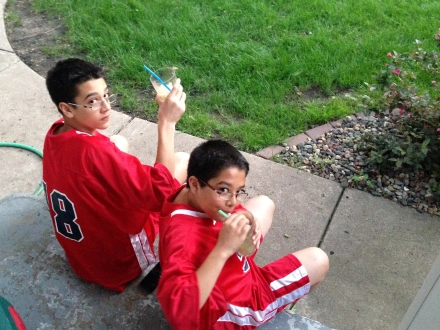At 12:25 p.m. on Wednesday, February 26, 2014 I just finished my first experience judging the #MNcollegiateDECA state competition in Mankato, MN. Between 8 a.m. and 10 a.m. I judged six students on their ability to read a case study in the restaurant and food service management area and present their solutions to an ethical and operational dilemma facing a fictitious restaurant chain. The details of their case is not important. That students chose, at such an early hour of the morning, to let their skills be judged — that’s the important point.
When I brought Rasmussen students to the competition two years ago my focus was on the top students. I wanted to make sure my students were among the top ranked: confident, well informed, professional, able to problem solve and think on their feet. My focus is different today. I want to talk about the students who lacked confidence, need more experience, and still pepper their speech with “like” and “stuff.”
The existence of these aforementioned students at the DECA competition lead me to be hopeful for employment candidates in the future. WHAT? How can that be?
These students took a risk and opened themselves up to true feedback. By title I’m judging them, their performance, and their ability at this point in time. Asking for feedback is never easy. Asking for feedback from strangers and intending to improve from that feedback shows true commitment to growth.
As business leaders, we have something to learn. Based on the example of these inexperienced, but dedicated, potential candidates, I recommend the following actions for our personal and professional growth.
- Let your business and your contribution be “judged.” In DECA you are not approaching someone who will be judgmental. There is a different. Reach out to customers with whom you have the best relationships. Open yourself up to review from business peers, coaches, and mentors whom you trust to give you an accurate assessment delivered with love.
- Review the feedback carefully, then put it away for a day or two. Our businesses are wrapped up in our identities. It’s understandable that we’d feel defensive or emotional over the feedback we receive. Don’t reject the feedback immediately or rush to make changes. Instead, let the emotions fade for a couple of days. Then review the comments again with a trusted mentor. Really discuss the merits, opportunities, and challenges of each point.
- Create an action plan. What will you change, by when, and why? Make sure any changes are intentional and add value to your most important stakeholders. By the way; you are one of those stakeholders.
- Set your action plan side by side with your business and personal mission statements. If there are areas that don’t align one of two things may be true: 1) your mission has evolved since you’ve looked at it last and needs updating, or 2) you need to revisit your action plan.
The steps outlined here go far beyond creating a to-do list. It’s your opportunity to transform yourself and your business. How often should you go through this process? I would recommend once a year, but if your business is in a state of rapid growth you might go through the steps more often.
The bottom line: Not everyone is at the top of their game at all times. The ones that will break through to success are the ones that will put their assumptions at risk.









